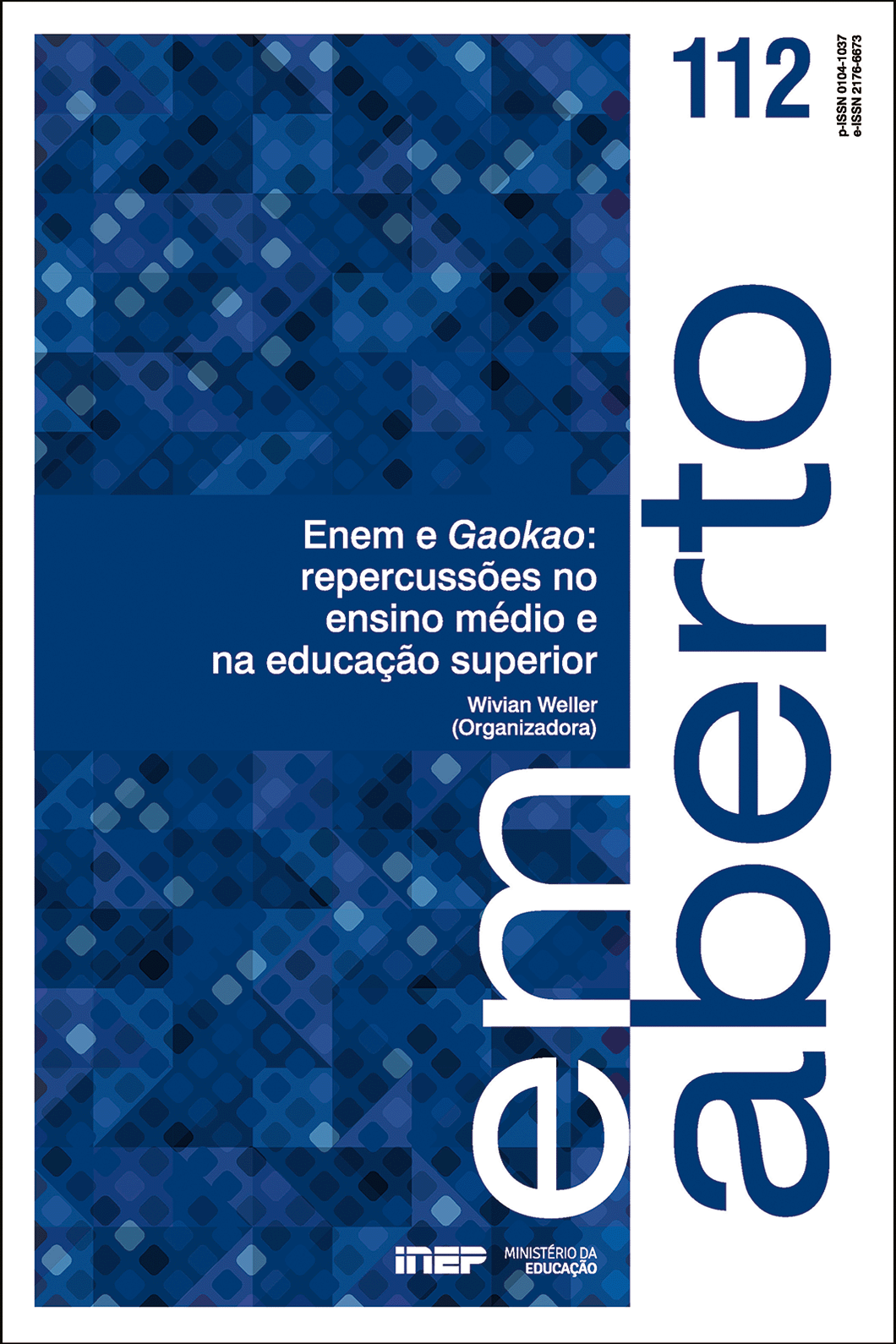Gaokao: vetor de mobilidade social ou guardião do elitismo?
Resumo
Este artigo dá continuidade à análise dos dados coletados em 2007, com o intuito de verificar se o Gaokao facilitou a mobilidade social ascendente na China. A primeira parte analisa dados nacionais e regionais sobre as tendências de mudança do exame, o acesso a diferentes tipos de universidades e a manutenção das oportunidades de acesso às instituições de elite para grupos sociais privilegiados. A segunda parte investiga o impacto do exame, rastreando, ao longo de 14 anos, três entrevistados codificados como Gaokao-campeão, Gaokao-perdedor e Gaokao-medíocre. Comparando os resultados que obtiveram no exame com as trajetórias profissionais subsequentes e o status social, destacam-se dois aspectos: 1) o Gaokao promove a ideologia da meritocracia e promete mobilidade social ascendente por meio da expansão das oportunidades de educação superior; 2) por detrás do aspecto meritocrático, está o aprofundamento da desigualdade social em todos os níveis, desde a renda até o status de hukou e as redes sociais. Essa desigualdade mantém as oportunidades e as redes de elite. O Gaokao serve para legitimar privilégios, justificar as promessas quebradas de mobilidade social ascendente e normalizar a sensação de desvalorização e inutilidade daqueles de origem rural e da classe trabalhadora.
Downloads
Referências
ANG, Y. Y. How China escaped the poverty trap. New York: Cornell University Press, 2016.
CEBOLLA-BOADO, H.; HU, Y.; SOYSAL, Y. N. Why study abroad?: sorting of Chinese students across British universities. British Journal of Sociology of Education, [s. l.], v. 39, n. 3, p. 365-380, 2018.
CHINA. Ministry of Education (MOE). The 211 Project. Beijing: Ministry of Education of the People’s Republic of China, 2001. Disponível em: http://www.moe.gov.cn/publicfiles/business/htmlfiles/moe/moe_1985/200804/9084.html. Acesso em: 5 set. 2021.
CHINA. National Bureau of Statistics of China (NBSC). China Statistical Yearbook 2019. [Beijing], 2019. Disponível em: http://www.stats.gov.cn/tjsj/ndsj/2019/indexeh.htm. Acesso em: 14 dez. 2021.
CHINA. National Bureau of Statistics of China (NBSC). Households’ income and consumption expenditure in 2019. Beijing, Jan. 2020. Disponível em: http://www.stats.gov.cn/english/PressRelease/202001/t20200119_1723719.html. Acesso em: 8 dez. 2021.
DONNELLY, M.; EVANS, C. Framing the geographies of higher education participation: schools, place and national identity. British Educational Research Journal, [s. l.], v. 42, n. 1, p. 74-92, Feb. 2016.
FONG, V. L. China’s one-child policy and the empowerment of urban daughters. American Anthropologist, [s. l.], v. 104, n. 4, p. 1098-1109, Dec. 2002.
FONG, V. L. Only hope: coming of age under China’s one-child policy. Stanford, Calif.: Stanford University Press, 2004. 242 p.
HENZE, J.; ZHU, J. Current research on Chinese students studying abroad. Research in Comparative and International Education, [s. l.], v. 7, n. 1, p. 90-104, 2012.
KIM, S. W.; BROWN, K.; FONG, V. L. Credentialism and career aspirations: how urban Chinese youth chose high school and college majors. Comparative Education Review, [s. l.], v. 60, n. 2, p. 271-292, May 2016.
KIM, S. W.; BROWN, K.; FONG, V. L. How flexible gender identities give young women advantages in China’s new economy. Gender and Education, [s. l.], v. 30, n. 8, p. 982-1000, 2018.
KIM, S. W.; FONG, V. L. A longitudinal study of son and daughter preference among Chinese only-children from adolescence to adulthood. The China Journal, [s. l.], n. 71, p. 1-24, Jan. 2014.
LIU, Y. Geographical stratification and the role of the state in access to higher education in contemporary China. International Journal of Educational Development, [s. l.], v. 44, p. 108-117, Sept. 2015.
LIU, Y. Higher education, meritocracy and inequality in China. [s. l.]: Springer, 81 2016.
LIU, Y. Geographical stratification and the provision of education in contemporary China. In: CARRILLO GARCIA, B.; HOOD, J.; KADTZ, P. I. (Eds.). Handbook of welfare in China. Cheltenham: Edwad Elgar Publishing, 2017. (Handbooks of Research in Contemporary China).
LIU, Y. When choices become chances: extending Boudon’s positional theory to understand University choices in contemporary China. Comparative Education Review, [s. l.], v. 62, n. 1, p. 125-146, Feb. 2018.
LOYALKA, P. et al. Inequalities in the pathway to College in China: when do students from poor areas fall behind? The China Quarterly, [s. l.], v. 229, p. 172- 194, 2017.
LU, X. Contemporary Chinese social structure. Beijing: Chinese Academy of Social Sciences, 2010.
LYU, M.; LI, W.; XIE, Y. The influences of family background and structural factors on children’s academic performances: a cross-country comparative study. Chinese Journal of Sociology, [s. l.], v. 5, n. 2, p. 173-192, Apr. 2019.
MARGINSON, S. High participation systems of higher education. The Journal of Higher Education, [s. l.], v. 87, n. 2, p. 243-271, 2016.
OUR WORLD IN DATA. Enrollment ratios between 1980 and 2010 for tertiary education. [s. d.]. Disponível em: <https://ourworldindata.org/tertiary-education>. Acesso em: 6 set. 2021.
QUAN, R.; HE, X.; SLOAN, D. Examining Chinese postgraduate students’ academic adjustment in the UK higher education sector: aprocess-based stage model. Teaching in Higher Education, [s. l.], v. 21, n. 3, p. 326-343, Feb. 2016.
REAY, D.; CROZIER, G.; CLAYTON, J. ‘Strangers in paradise’? Sociology, [s. l.], v. 43, n. 6, p. 1103-1121, Dec. 2009.
RUAN, D. et al. Silent revolution: social origins and university matriculation at Peking University and Suzhou University, 1952-2002. Social Sciences in China, Beijing, v. 1, n. 1, p. 98-118, Jan. 2012.
SHEN, W. Transnational research training: Chinese visiting doctoral students overseas and their host supervisors. Higher Education Quarterly, [s. l.], v. 72, n. 3, p. 224-236, 2018.
TAM, T.; JIANG, J. Divergent urban-rural trends in college attendance. Sociology of Education, [s. l.], v. 88, n. 2, p. 160-180, 2015.
TSUI, M.; RICH, L. The only child and educational opportunity for girls in urban China. Gender & Society, [s. l.], v. 16, n. 1, p. 74-92, Feb. 2002.
WANG, Y.; FONG, V. L. Little emperors and the 4:2:1 generation: China’s singletons. Journal of The American Academy of Child & Adolescent Psychiatry, [s. l.], v. 48, n. 12, p. 1137-1139, 2009.
WU, X. Higher education, elite formation and social stratification in contemporary China: preliminary findings from the Beijing college students panel survey. Chinese Journal of Sociology, [s. l.], v. 3, n. 1, p. 3-31, 2017.
XIONG, P.; LONG, H.; DOU, W. The data secret files on the 985 Universities in 2016. The Paper, Shanghai, [s. l.], v. 1, n. 1, p. 1-2, June 2016.
Copyright (c) 2021 Em Aberto

This work is licensed under a Creative Commons Attribution-NonCommercial 4.0 International License.
A aceitação do texto implica automaticamente a cessão de seus direitos autorais ao Inep.
A revista Em Aberto adota a licença CC-BY.
A reprodução total ou parcial dos textos da revista é permitida desde que citada a fonte de publicação original e o link para a licença CC BY 4.0 e que sejam indicadas eventuais alterações no texto.













